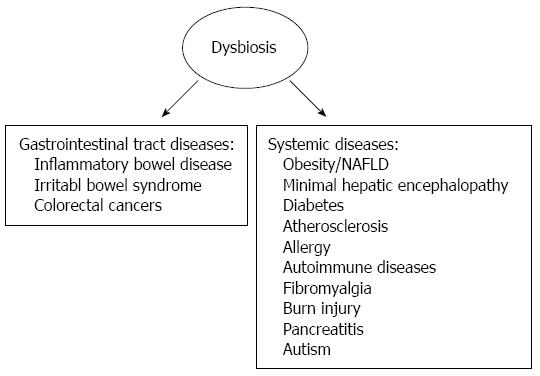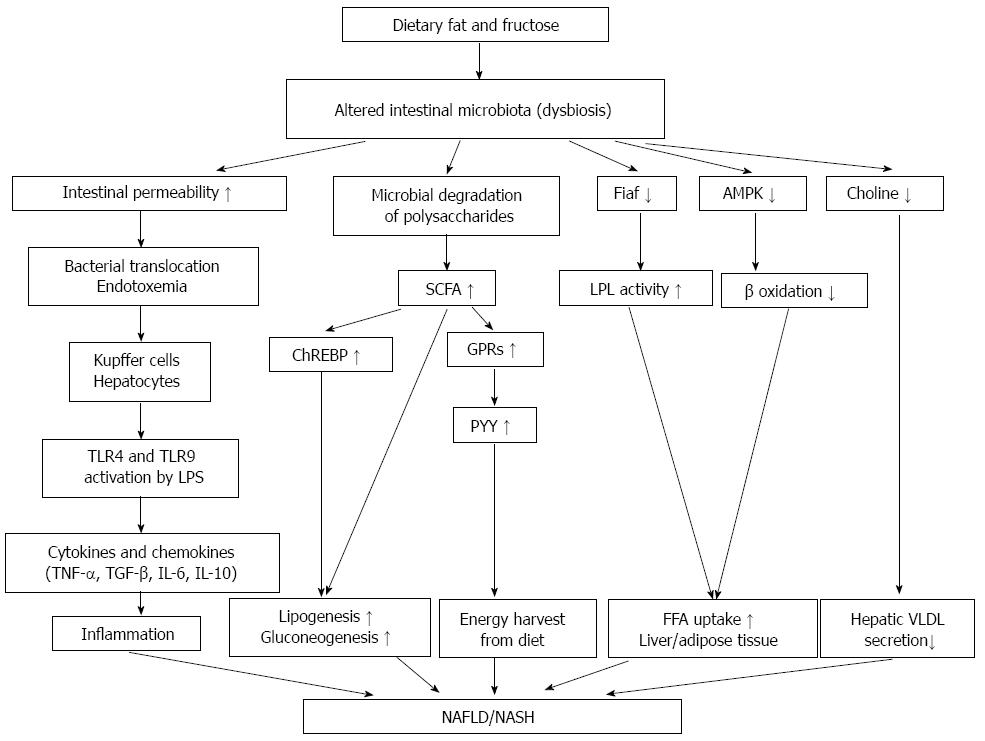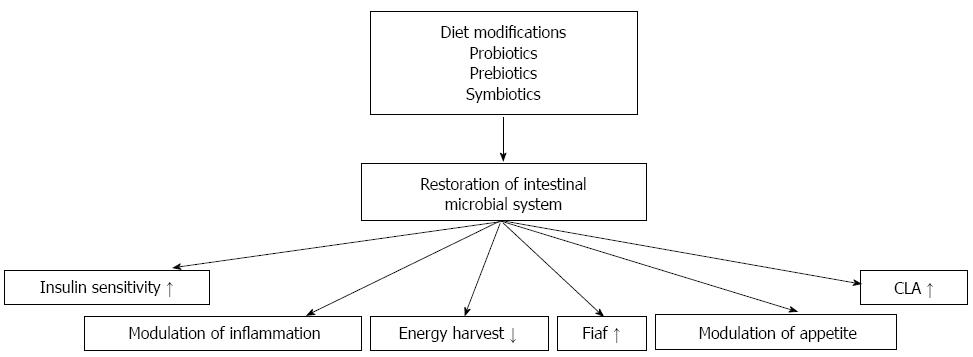Copyright
©2014 Baishideng Publishing Group Inc.
World J Gastroenterol. Nov 28, 2014; 20(44): 16452-16463
Published online Nov 28, 2014. doi: 10.3748/wjg.v20.i44.16452
Published online Nov 28, 2014. doi: 10.3748/wjg.v20.i44.16452
Figure 2 Effects of gut microbiota on the development of nonalcoholic fatty liver disease and nonalcoholic steatohepatitis through the gut-liver axis.
Altered intestinal bacterial composition (dysbiosis) results in degradation of carbohydrates in the intestinal lumen and produces short-chain fatty acids (SCFAs), which are substrates for hepatic lipogenesis and gluconeogenesis. The interaction of SCFAs with G-protein coupled receptors (GPRs) releases the peptide YY (PYY), which modulates gut motility and nutrient absorption. SCFAs stimulate hepatic carbohydrate response element binding protein (ChREBP) and increase lipogenesis. Bacterial translocation to the portal circulation causes interaction of bacterial endotoxins (lipopolysaccharides, LPS) with hepatic toll-like receptors (TLR4 and TLR9) and results in the release of cytokines and chemokines. Decreased Fiaf (fasting-induced adipose factor) levels enhance lipoprotein lipase (LPL) activity and cause fat accumulation. Choline deficiency causes liver steatosis via decreased secretion of very- low-density-lipoprotein-(VLDL) from the liver.
Figure 3 Probable mechanisms of action of the antiobesity effects of modulated intestinal microbiota.
CLA: Conjugated linoleic acid; Fiaf: Fasting-induced adipocyte factor.
- Citation: Arslan N. Obesity, fatty liver disease and intestinal microbiota. World J Gastroenterol 2014; 20(44): 16452-16463
- URL: https://www.wjgnet.com/1007-9327/full/v20/i44/16452.htm
- DOI: https://dx.doi.org/10.3748/wjg.v20.i44.16452











